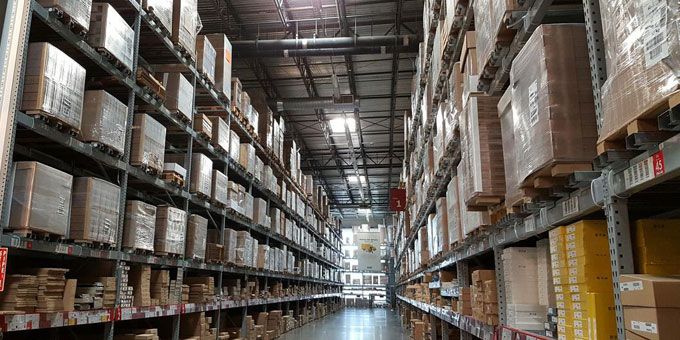Smart Warehousing is growing at an incredible pace, and it also happens to be the future of ecommerce. In this piece, I’m going to set out the main reasons why.
 Why Smart Warehousing is the Future of Ecommerce
Why Smart Warehousing is the Future of Ecommerce

Contributed by | Kayleigh Alexandra
For someone with little interest in the inner workings of the systems they rely on, ecommerce must seem borderline magical. They place an order online, wait a short while, and receive it at their delivery location. What they don’t know (because they don’t need to) is that the back-end is nowhere near as slick and optimized as the front-end system they get to use.
The online element has always been about the sales process alone. Once an order has been placed, it ceases to be relevant, and the old model returns to the fore: having workers rummaging through storage to find the required items and get them into the shipping phase of the order. You could describe it as mail-order retail with a glossier presentation.
Enter smart warehousing. It’s the practice of using a broad variety of automated procedures and analytics-driven tactics with IoT-viable devices to create warehousing systems that are significantly faster, cheaper, and more efficient. It’s growing at an incredible pace, and it also happens to be the future of ecommerce. In this piece, I’m going to set out the main reasons why. Let’s get to them:
It can provide superior stock estimation
It’s extremely common for retail businesses to have stock issues. Demand is tough to foresee, and with many companies using the same suppliers, one breakdown in the supply chain can cause major issues for weeks. If they order too much stock, it goes unsold for long periods and eats into profitability. If they order too little, they can run out and see shoppers go elsewhere.
Smart warehousing advances stock estimation in two ways: firstly, it ensures completely accurate stock tallies at all times through noticing when items are added or removed, and secondly, it neatly ties into machine learning processes capable of factoring in many variables to predict when stock will most likely run out (and order fresh supplies to suit). Optimizing resupply will save money and ensure that shopper disappointment is kept to a minimum.
It can cut down on operational costs
Creating and running an online store is highly flexible and relatively inexpensive, making it quite appealing — but it isn’t exactly as low-cost as it sometimes appears. Barring the small sellers who exclusively use dropshipping (which is a viable option), merchants still need to source, store, manage and ship their products, and every part of that process will eat into their finances. What’s more, it’s hard to do efficiently: and the worse they handle it, the more it’ll cost them.
While it would be excessively expensive for an SME to set up a smart warehouse at this point, they don’t need to create their own storage areas — they can tap into existing systems, simply renting the necessary space and getting to take advantage of all the built-in smart features. This is a great option: it’s fast, incredibly scalable, and cost-effective. And with all the IoT devices involved, rented storage can easily and accurately be monitored from afar.
It can significantly improve working conditions
Working in a warehouse isn’t great, and despite advances in technology, it hasn’t improved much. Just think about the clunkiness still inherent to systems as big as Amazon’s operation. The sheer demand is highly stressful (you can’t have missed the complaints about Amazon’s working conditions) — what’s more, it’s bad for business, as the combination of employee burnout, bad press and wasted time/effort can only negatively affect profitability.
Usefully, a smart warehouse can improve communications and readily support extended automation options in the form of robots designed to operate in warehouses. It isn’t about supplanting standard employees: it’s about supporting them. If many of the most physically arduous tasks can be automated away, the human employees can be given workloads that are less fast-paced and considerably easier on their physical wellbeing.
It can massively boost turnaround times
Demand for speedy delivery keeps going up. At one point, receiving an ordered product within a few working days seemed luxurious, but now it’s considered mediocre. Amazon turned 2-day delivery into an expectation, then did the same with 1-day delivery, and has even made same-day delivery a realistic option for some items in countless areas. As noted, Amazon’s warehouses struggle, so imagine the strain this standard can place on a small online store.
If sellers use systems like FBA, though, they can achieve speedy turnaround times — and if they grow to the point of being able to afford their own warehouse spaces, they can kit them out with smart technology. It won’t realistically allow them to compete with Amazon, but it might let them come close enough that their customers wouldn’t be turned away by slow delivery.
Ecommerce has utterly transformed the retail world, forcing brick-and-mortar retail to adapt to survive and granting incredible opportunities to sellers who would never have had the capital or time to set up physical stores — but with the biggest brands driving up standards at a relentless pace, smaller brands need to work more efficiently.
Smart warehousing is key to this: advancing stock estimation, cutting operational costs, helping employees be happier and more productive, and enabling the lightning-fast turnaround times that shoppers are increasingly expecting. At the upper end, it’s the present of ecommerce, but across the board it’s the future — and the future is bright.
* Image credit: Pixabay
The content & opinions in this article are the author’s and do not necessarily represent the views of RoboticsTomorrow
Comments (0)
This post does not have any comments. Be the first to leave a comment below.
Featured Product

